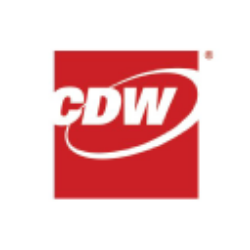NXP Semiconductors N.V.'s Competitive Trends and Market Share Dynamics
1. Market Share Overview and Competitive Positioning
1.1 Revenue Performance vs. Peers
NXP Semiconductors reported a -9.09% year-over-year revenue decline in Q4 2024, underperforming against competitors who saw an average 23.87% revenue growth during the same period. Despite this, NXP maintained superior profitability with a net margin of 16.23% (outperforming peers), driven by its focus on high-value automotive and industrial markets.
Key Metrics (Q4 2024):
| Metric | NXP | Competitor Average |
|---|---|---|
| Revenue Growth (YoY) | -9.09% | +23.87% |
| Net Margin | 16.23% | ~12-14% |
| Beta (Volatility) | 1.4 | 1.5–1.9 |
Implications: While NXP’s revenue contraction reflects cyclical headwinds in automotive/industrial markets, its premium margins validate its differentiated product strategy.
1.2 Relative Market Share (RMS) Leadership
NXP defines "Relative Market Share" (RMS) as its market share relative to the second-largest competitor in specific SAMs (Serviceable Addressable Markets). The company claims RMS >1.5x in automotive radar, vehicle networking, and secure embedded solutions, categorizing it as a "true leader" in these niches.
RMS Framework:
| RMS Range | Classification |
|---|---|
| 1.0–1.5x | Leader |
| >1.5x | True Leader |
Example: NXP’s 28nm 1-chip radar and 5nm vehicle computer (launched in 2023) have solidified its RMS dominance in automotive compute.
2. Automotive Market: Core Growth Driver
2.1 Market Positioning and EV Exposure
Automotive contributes 56–58% of NXP’s total revenue, with 35–37% of total sales linked to China. The company is a critical enabler of electrification (EVs) and advanced driver-assistance systems (ADAS):
- EV Penetration: NXP expects EVs to rise from 27% of global auto sales in 2023 to 34% in 2024, driving demand for its battery management systems (BMS) and power control ICs.
- China’s EV Ecosystem: Partnerships with BYD, NIO, and others have accelerated adoption of NXP’s 4D imaging radar and ultra-wideband (UWB) solutions.
Automotive Revenue Trends:
| Year | Automotive Revenue | YoY Growth |
|---|---|---|
| 2022 | $6.88B | +25% |
| 2023 | ~$7.5B | +9% |
| Q3 2024 | $1.83B | -3% |
Challenges: Q3 2024 weakness (-3% YoY) stemmed from inventory digestion in Europe/North America, offset by strong demand in China/Asia-Pacific.
2.2 Competitive Differentiation in Automotive
- Technology Leadership: First-to-market with 5nm vehicle computer (4B transistor NPU) for software-defined vehicles (SDVs).
- Pricing Power: Non-cancelable/non-returnable (NCNR) orders and supply shortages enable low single-digit ASP increases despite input cost inflation.
- China’s Innovation Edge: Chinese EV makers adopt NXP’s newest products 2–3x faster than Western OEMs, enhancing content-per-car.
3. Industrial & IoT: Mixed Performance
3.1 Revenue and Market Challenges
Industrial & IoT revenue fell -7% YoY to $563M in Q3 2024, reflecting:
- Macro-driven caution in Europe/NA industrial markets.
- Inventory reductions at distributors and direct customers.
Segment Revenue Breakdown:
| Segment | Q3 2024 Revenue | YoY Change |
|---|---|---|
| Automotive | $1.83B | -3% |
| Industrial & IoT | $563M | -7% |
| Mobile | $297M | -12% |
Bright Spots: Secure edge computing and UWB solutions gained traction in smart factories and medical devices.
4. Financial Resilience and Strategic Investments
4.1 Revenue and Profitability Trends
NXP demonstrated resilience despite cyclical downturns:
- 2023 Revenue: $13.28B (vs. $13.21B in 2022), a +0.5% increase.
- Gross Margin: Steady at 56–57% (non-GAAP), supported by pricing discipline.
Financial Highlights (2021–2023):
| Year | Revenue | Gross Margin | Operating Margin |
|---|---|---|---|
| 2021 | $11.06B | 56.1% | 32.9% |
| 2022 | $13.21B | 57.0% | 34.0% |
| 2023 | $13.28B | 56.8% | 33.5% |
4.2 Capital Allocation and R&D Focus
- R&D Investment: ~15% of revenue ($2B annually) dedicated to automotive radar, UWB, and AIoT.
- Capacity Expansion: $4B committed to long-term supply agreements with foundries (e.g., TSMC) and internal 200mm fabs for proprietary BCD/CMOS processes.
5. Competitive Risks and Litigation
5.1 Pricing Pressure and Commoditization
- Low-End MCU Markets: NXP has exited commoditized segments (e.g., sub-$1 MCUs) in China, ceding share to local players like HiSilicon.
- Litigation Risks: Losses in patent cases vs. Impinj (e.g., $18.9B damages awarded in 2023) could pressure margins.
5.2 ESG Positioning vs. Peers
NXP’s ESG profile outperforms peers, aiding customer retention in regulated markets:
| Company | ESG Risk Rating | Exposure Score |
|---|---|---|
| NXP Semiconductors | 16.7 (Low) | 45.4 |
| Texas Instruments | 21.9 (Medium) | 47.1 |
| Analog Devices | 18.1 (Low) | 50.2 |
6. Strategic Outlook and Growth Drivers
6.1 Accelerated Growth Initiatives
NXP’s six growth drivers (unveiled at 2023 Investor Day) include:
- SDV Compute Platforms: 5nm/3nm vehicle computers for centralized architectures.
- 4D Imaging Radar: Lead in ADAS L2+/L3 systems.
- Battery Management Systems (BMS): Partnerships with CATL and BYD.
- UWB Ecosystem: Expansion into automotive access and smart factories.
- AIoT Edge Devices: Secure processing for industrial automation.
- Chipset Partnerships: Collaborations with TSMC and GlobalFoundries.
6.2 2024–2025 Projections
- Revenue Growth: Low-to-mid single-digit growth in 2024 (H2 recovery), accelerating to +8–10% in 2025 as auto/industrial markets rebound.
- Margins: Gross margin stabilization at 56–57% despite input cost inflation.
- Market Share: Gains in automotive radar (40%+ share) and China EV semiconductors.
7. Conclusion: Balancing Cyclicality and Innovation
NXP Semiconductors remains a high-beta play on automotive electrification and AI-driven industrial automation. While near-term cyclical pressures (inventory digestion, China macro) persist, its technology moat in SDV compute, radar, and UWB positions it for outperformance in the 2025–2030 auto upgrade cycle. Investors should monitor:
- China EV Production Trends: BYD/NIO design-win momentum.
- Litigation Resolutions: Impact of Impinj case on financials.
- Foundry Partnerships: Execution on 3nm/5nm capacity ramps.
Final Rating: Overweight (Based on 2025 EV/EBITDA of 12x vs. sector avg. 15x).

















